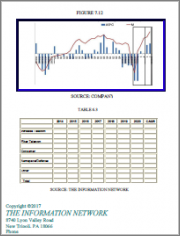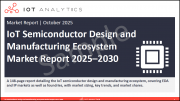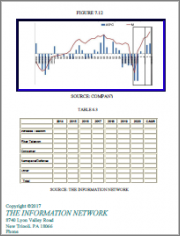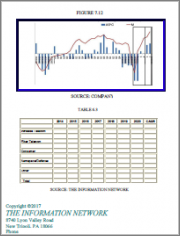
|
시장보고서
상품코드
1803872
직접 묘화 리소그래피 장비 시장 : 기술 유형, 노광 방법, 해상도 능력, 용도, 최종사용자별 - 세계 예측(2025-2030년)Direct Writing Lithography Equipment Market by Technology Type, Exposure Method, Resolution Capability, Application, End User - Global Forecast 2025-2030 |
||||||
직접 묘화 리소그래피 장비 시장은 2024년에 10억 9,000만 달러로 평가되었으며, 2025년에는 11억 7,000만 달러, CAGR 7.25%로 성장하여 2030년에는 16억 6,000만 달러에 달할 것으로 예측됩니다.
| 주요 시장 통계 | |
|---|---|
| 기준 연도 2024년 | 10억 9,000만 달러 |
| 추정 연도 2025년 | 11억 7,000만 달러 |
| 예측 연도 2030년 | 16억 6,000만 달러 |
| CAGR(%) | 7.25% |
하이테크 산업에서 차세대 제조 기술의 핵심인 직접 묘화 리소그래피의 변화 가능성을 탐구합니다.
직접 묘화 리소그래피는 복잡한 마이크로-나노스케일의 패턴을 전례 없는 정밀도와 유연성으로 제작할 수 있는 매우 중요한 제조 기술로 부상하고 있습니다. 이 방법은 기존의 마스크를 사용하지 않고 첨단 빔 또는 레이저 시스템을 이용하여 기판에 직접 패턴을 기록하는 방식입니다. 그 결과, 프로토타이핑 사이클을 가속화하고 반도체 연구, 포토닉스, 바이오메디컬 엔지니어링 등 다양한 분야의 차세대 디바이스 개발을 지원합니다. 기존의 리소그래피 접근 방식과 달리, 직접 묘화 리소그래피는 혁신가들이 설계를 빠르게 반복하면서 미세화의 한계에 도전할 수 있도록 도와줍니다.
혁명적인 변화로 직교 리소그래피의 능력을 재정의하고, 해상도를 높이고, 워크플로우를 간소화하고, 애플리케이션의 지평을 넓혔습니다.
최근 직접 묘화 리소그래피는 점진적인 기능 강화에 그치지 않고 혁신적인 변화를 거듭하고 있습니다. 그 최전선은 더 미세한 해상도를 향한 끊임없는 추구이며, 전자빔과 이온빔 제어의 혁신을 통해 현재 20나노미터 이하의 패터닝을 일상적으로 달성하는 시스템이 되었습니다. 이러한 정밀도의 도약은 초고속 펄스 성형(pulse shaping)을 활용하여 처리량과 해상도의 균형을 맞추고 생산 속도를 획기적으로 가속화할 수 있는 병렬 쓰기 접근 방식을 가능하게 하는 레이저 기반 기술의 혁신으로 보완됩니다.
2025년 발효되는 미국 관세가 직접 묘화 리소그래피 공급망과 전략적 파트너십에 미치는 종합적인 영향에 대한 평가
미국이 2025년에 발동한 관세는 직접 묘화 리소그래피 생태계 전체에 광범위한 결과를 가져왔습니다. 장비 수입은 관세 인상에 따른 관세 인상으로 제조업체들은 부품 조달 전략을 재검토해야 하는 상황에 처했습니다. 많은 기업들이 고진공 펌프, 정밀 스테이지, 전자광학 등 중요한 서브 시스템을 국내 또는 관련 시장 내에서 현지화하기 위한 노력을 가속화하고 있습니다. 이러한 변화는 비용 압박을 완화하고 납기일을 준수하기 위해 공급업체와 장비 조립업체 간의 새로운 파트너십을 촉진했습니다.
기술 유형, 노출 방법, 해상도, 산업별 시장 역학이 어떻게 움직이고 있는지, 상세 세분화 분석
세분화 분석을 통해 다양한 기술 유형 및 응용 분야에서 직접 묘화 리소그래피의 채택을 형성하는 미묘한 촉진요인이 밝혀졌습니다. 기술 유형별로는 전자빔 직접 묘화은 반도체 연구에 탁월한 정밀도를 제공하며, 이온빔 직접 묘화은 표면 개질에 이상적인 다양한 재료 상호 작용을 제공합니다. 또한, 마스크리스 직접 묘화 포토리소그래피는 마스크 제작 공정을 생략하여 설계의 반복을 가속화합니다. 나노임프린트 직접 묘화 리소그래피는 고해상도 패턴을 비용 효율적으로 복제하여 기술 포트폴리오를 완성합니다.
아메리카, 유럽, 중동 및 아프리카, 아시아태평양의 직접 묘화 리소그래피 채택에 영향을 미치는 주요 지역 개발 동향 분석
직조 리소그래피의 지역별 분석은 아메리카, 유럽, 중동 및 아프리카, 아시아태평양에서 뚜렷한 채용 및 투자 패턴이 있음을 보여줍니다. 아메리카에서는 국립 연구소와 일류 대학이 주도하는 강력한 연구 인프라가 고정밀 전자빔 및 레이저 기반 시스템에 대한 강력한 수요를 주도하고 있습니다. 양자 컴퓨팅 및 첨단 반도체 연구를 지원하는 연방 및 주정부 차원의 이니셔티브는 특수 장비의 현지 생산을 더욱 촉진하고 있습니다.
직접 묘화 리소그래피 기술의 미래를 형성하는 선도적 공급업체들의 전략적 노력과 경쟁적 위치 확인
업계 주요 진입자들은 차세대 기술에 대한 전략적 투자와 파트너십을 통해 경쟁력을 적극적으로 정의하고 있습니다. Raith GmbH는 첨단 연구 이니셔티브를 지원하는 초정밀 전자빔 직접 묘화 장비의 개선에 주력하고 있으며, Nanoscribe GmbH는 바이오메디컬 및 포토닉스 응용 분야의 미세구조를 위한 2광자 중합 시스템 포트폴리오를 지속적으로 확장하고 있습니다. Vistec Electron Beam GmbH는 모듈식 아키텍처 설계를 추구하여 신속한 현장 업그레이드와 현지 맞춤화를 가능하게함으로써 증가하는 무역 관련 비용을 상쇄했습니다.
경쟁의 민첩성을 높이고 직접 묘화 리소그래피 비즈니스의 혁신을 가속화하기 위해 업계 리더를 위한 실용적인 제안을 제공합니다.
업계를 선도하는 기업들은 진화하는 직접 묘화 리소그래피의 세계에서 우위를 점하기 위해 다각적인 전략을 채택해야 합니다. 유연한 플랫폼 아키텍처에 대한 투자를 우선시함으로써 20나노미터 이하의 양자 소자 구조 및 고처리량 폴리머 패터닝과 같은 새로운 애플리케이션 요구사항에 빠르게 적응할 수 있습니다. 동시에 재료 혁신가 및 소프트웨어 개발자와의 파트너십을 강화하여 애플리케이션에 특화된 공정 레시피 개발을 가속화하고 해상도를 희생하지 않고도 처리량을 향상시킬 수 있습니다.
정확한 인사이트를 위한 1차 인터뷰 2차 데이터 수집 및 종합적인 분석 프레임워크를 통합한 엄격한 조사 방법론에 대한 자세한 내용
이 분석은 포괄적이고 정확한 인사이트를 보장하기 위해 1차 조사와 2차 조사를 결합한 엄격한 조사 방법을 기반으로 합니다. 1차 조사는 장비 제조업체, 재료 개발 기업, 주요 R&D 기관, 주요 산업 분야의 최종사용자 기업에 대한 심층 인터뷰로 구성되었습니다. 이 인터뷰는 기술 로드맵, 채택 촉진요인, 새로운 과제에 대한 생생한 관점을 제공했습니다.
경쟁 우위를 위한 직접 묘화 리소그래피의 전략적 중요성과 미래 지향적 관점을 강조하는 결론을 도출합니다.
직접 묘화 리소그래피의 진화는 해상도의 비약적인 향상, 적응형 제어 시스템, 수렴하는 애플리케이션의 요구사항에 의해 형성되어 중요한 교차로에 서 있습니다. 기술 발전이 미세화의 최전선을 계속 밀고 나가는 가운데, 이해관계자들은 정책 전환, 공급망 재편, 경쟁 심화에 영향을 받는 환경을 극복해야 합니다.
목차
제1장 서문
제2장 조사 방법
제3장 주요 요약
제4장 시장 개요
제5장 시장 역학
제6장 시장 인사이트
- Porter's Five Forces 분석
- PESTEL 분석
제7장 미국 관세의 누적 영향 2025
제8장 직접 묘화 리소그래피 장비 시장 : 기술 유형별
- 전자빔(E빔) 직접 묘화
- 이온빔 직접 묘화
- 레이저 기반 직접 묘화 리소그래피
- 마스크레스 직접 묘화 포토리소그래피
- 나노임프린트 직접 묘화 리소그래피
제9장 직접 묘화 리소그래피 장비 시장 : 노출 방법별
- 병렬 묘화
- 직렬 묘화
제10장 직접 묘화 리소그래피 장비 시장 : 해상도 능력별
- 20-50 nm
- 50 nm 이상
- 20 nm 이하
제11장 직접 묘화 리소그래피 장비 시장 : 용도별
- 바이오메디컬
- MEMS
- 마이크로플루이딕스
- 마이크로메카닉스
- 포토닉스와 옵토일렉트로닉스
- 양자 컴퓨팅
- 반도체 패키징
제12장 직접 묘화 리소그래피 장비 시장 : 최종사용자별
- 항공우주 및 자동차
- 헬스케어와 생명과학
- 반도체 및 일렉트로닉스
- 주조소
- 통합 디바이스 제조업체
- 아웃소싱에 의한 조립·테스트
제13장 아메리카의 직접 묘화 리소그래피 장비 시장
- 미국
- 캐나다
- 멕시코
- 브라질
- 아르헨티나
제14장 유럽, 중동 및 아프리카의 직접 묘화 리소그래피 장비 시장
- 영국
- 독일
- 프랑스
- 러시아
- 이탈리아
- 스페인
- 아랍에미리트
- 사우디아라비아
- 남아프리카공화국
- 덴마크
- 네덜란드
- 카타르
- 핀란드
- 스웨덴
- 나이지리아
- 이집트
- 튀르키예
- 이스라엘
- 노르웨이
- 폴란드
- 스위스
제15장 아시아태평양의 직접 묘화 리소그래피 장비 시장
- 중국
- 인도
- 일본
- 호주
- 한국
- 인도네시아
- 태국
- 필리핀
- 말레이시아
- 싱가포르
- 베트남
- 대만
제16장 경쟁 구도
- 시장 점유율 분석, 2024
- FPNV 포지셔닝 매트릭스, 2024
- 경쟁 분석
- Canon Inc.
- Carl Zeiss AG
- Crestec Corporation
- Elionix Inc.
- Heidelberg Instruments Mikrotechnik GmbH
- Holmarc Opto-Mechatronics Ltd.
- HTL Co. Japan Ltd.
- JEOL Ltd.
- KLOE SAS
- Microlight3D SAS
- miDALIX, d.o.o.
- Nano Vacuum Pty Ltd
- NanoSystem Solutions, Inc.
- Quantum Design Inc.
- Raith GmbH
- SUSS MicroTec SE
- SVG Optronics,Co. ,Ltd
- Thermo Fisher Scientific Inc.
- Vistec Electron Beam GmbH
제17장 리서치 AI
제18장 리서치 통계
제19장 리서치 컨택트
제20장 리서치 기사
제21장 부록
KSM 25.09.10The Direct Writing Lithography Equipment Market was valued at USD 1.09 billion in 2024 and is projected to grow to USD 1.17 billion in 2025, with a CAGR of 7.25%, reaching USD 1.66 billion by 2030.
| KEY MARKET STATISTICS | |
|---|---|
| Base Year [2024] | USD 1.09 billion |
| Estimated Year [2025] | USD 1.17 billion |
| Forecast Year [2030] | USD 1.66 billion |
| CAGR (%) | 7.25% |
Exploring the Transformative Potential of Direct Writing Lithography as a Cornerstone of Next-Generation Fabrication Techniques in High-Tech Industries
Direct writing lithography has emerged as a pivotal fabrication technique, enabling the creation of intricate micro- and nanoscale patterns with unprecedented precision and flexibility. This methodology dispenses with traditional masks and harnesses advanced beam or laser systems to write patterns directly onto substrates. As a result, it accelerates prototyping cycles and supports the development of next-generation devices across sectors such as semiconductor research, photonics, and biomedical engineering. In contrast to conventional lithographic approaches, direct writing lithography empowers innovators to push the boundaries of miniaturization while rapidly iterating designs.
The growing sophistication of beam control algorithms, laser modulation, and high-precision stages has unlocked new resolution thresholds, driving broader adoption in research laboratories and specialized manufacturing environments. Moreover, the ability to seamlessly integrate diverse material systems-from resist formulations to functional inks-has cultivated a vibrant ecosystem of equipment suppliers, materials developers, and end-users, all collaborating to harness its potential.
This introduction sets the stage for a deeper examination of how technological advancements, regulatory changes such as the United States tariffs of 2025, and evolving application requirements are collectively reshaping the competitive landscape. By exploring transformative shifts, segmentation dynamics, regional trends, and actionable recommendations, this summary provides the essential context for informed decision-making in a rapidly evolving industry.
Revolutionary Shifts Redefining Direct Writing Lithography Capabilities with Enhanced Resolution Streamlined Workflows and Expanding Application Horizons
Recent years have witnessed transformative shifts in direct writing lithography that extend far beyond incremental enhancements. At the forefront is the relentless push toward finer resolution, with systems now routinely achieving sub-20 nanometer patterning through innovations in electron beam and ion beam control. These leaps in precision have been complemented by breakthroughs in laser-based techniques that leverage ultrafast pulse shaping to balance throughput with resolution, enabling parallel writing approaches that dramatically accelerate production speeds.
Concurrently, the integration of machine learning algorithms for real-time process optimization has ushered in new levels of reliability and repeatability. Adaptive feedback controls now self-correct beam drift and compensate for thermal fluctuations, ensuring consistent feature fidelity across large substrate areas. Furthermore, the rise of maskless direct writing photolithography has simplified workflows, reducing pre-production cycle times and unlocking rapid design iterations.
In parallel, the maturation of nanoimprint direct writing lithography has expanded the repertoire of patternable materials and surface treatments, allowing manufacturers to imprint complex topographies with minimal post-processing. Together, these developments are redefining what is possible in fields ranging from quantum computing to advanced biomedical devices, marking a pivotal shift toward more agile and customizable fabrication paradigms.
Assessing the Comprehensive Consequences of United States Tariffs Enacted in 2025 on Direct Writing Lithography Supply Chains and Strategic Partnerships
The tariffs imposed by the United States in 2025 have yielded far-reaching consequences across the direct writing lithography ecosystem. Equipment imports have encountered elevated duties, prompting manufacturers to reassess component sourcing strategies. Many firms have accelerated efforts to localize critical subsystems such as high-vacuum pumps, precision stages, and electron optics within domestic or allied markets. This shift has fostered new partnerships between suppliers and equipment assemblers aimed at mitigating cost pressures and safeguarding delivery timelines.
At the same time, the added expenses associated with imported beam generators and laser modules have driven both OEMs and end users to explore alternative procurement channels. Collaborative agreements with international research institutes have emerged as a means to share the burden of elevated capital expenditure. As a result, consortia focused on joint testing and development have become more prevalent, ensuring that technological roadmaps remain aligned despite evolving trade barriers.
These adjustments have not only reshaped material flows but also influenced strategic priorities. Companies are now placing greater emphasis on modular designs that allow sensitive subsystems to be swapped or upgraded locally, reducing exposure to fluctuating tariff classifications. In doing so, the industry is building resilience against future policy shifts while preserving access to state-of-the-art capabilities.
Unlocking In-Depth Segmentation Insights Revealing How Technology Types Exposure Methods Resolution Capabilities and Industry Verticals Drive Market Dynamics
Segmentation analysis reveals the nuanced drivers shaping direct writing lithography adoption across diverse technology types and application domains. In terms of technology type, electron beam direct writing delivers unmatched precision for semiconductor research, while ion beam direct writing offers versatile material interactions ideal for surface modification. Laser-based direct writing lithography brings the advantage of high throughput in polymer patterning, and maskless direct writing photolithography accelerates design iteration by eliminating mask fabrication steps. Nanoimprint direct writing lithography rounds out the technology portfolio with cost-effective replication of high-resolution patterns.
The choice of exposure method further influences system performance, with parallel writing architectures maximizing throughput across large substrates and serial writing strategies enabling sub-20 nanometer feature creation at the expense of increased process time. Resolution capability serves as another key differentiator, spanning the spectrum from above 50 nanometers for rapid prototyping, to the 20-50 nanometer range that balances speed with precision, down to below 20 nanometers for cutting-edge device research.
Application segmentation highlights the broad utility of direct writing lithography, ranging from biomedical device prototyping that leverages biocompatible resists, to microelectromechanical systems that require intricate three-dimensional architectures, to microfluidics, micromechanics, photonics and optoelectronics, quantum computing research, and semiconductor packaging innovations. Among end users, aerospace and automotive sectors seek robust, miniaturized components; healthcare and life sciences stakeholders demand biocompatible patterning capabilities; and the semiconductor and electronics vertical, including foundries, integrated device manufacturers, and outsourced assembly and test providers, continue to push the limits of resolution and throughput.
Analyzing Pivotal Regional Developments Impacting Direct Writing Lithography Adoption Across the Americas Europe Middle East and Africa and Asia-Pacific
Regional analysis of direct writing lithography underscores distinct patterns of adoption and investment across the Americas, Europe Middle East and Africa, and Asia-Pacific. In the Americas, a strong research infrastructure led by national laboratories and top-tier universities has driven robust demand for high-precision electron beam and laser-based systems. Federal and state-level initiatives supporting quantum computing and advanced semiconductor research have further bolstered local manufacturing of specialized equipment.
In Europe, Middle East and Africa, collaborative research programs funded by the European Union and national consortia have accelerated technology transfer between academic institutions and industry partners. Regional equipment manufacturers leverage these partnerships to refine maskless photolithography platforms and nanoimprint solutions. At the same time, government grants in the Middle East are catalyzing investments in photonics and microfluidics applications, creating new opportunities for system providers.
Asia-Pacific remains a dynamic growth center, driven by aggressive capacity expansions in semiconductor fabrication and increasing R&D budgets in markets such as China, South Korea, Japan, and Taiwan. Local OEMs are enhancing portfolios with hybrid systems that combine serial and parallel writing capabilities to meet diverse production requirements. Additionally, strategic alliances between equipment vendors and materials specialists are fostering an integrated ecosystem that supports rapid innovation cycles.
Examining Strategic Initiatives and Competitive Positioning of Leading Providers Shaping the Future of Direct Writing Lithography Technology
Key industry participants are actively defining competitive dynamics through strategic investments in next-generation technologies and partnerships. Raith GmbH has focused on refining ultra-high-precision electron beam direct writing systems to support advanced research initiatives, while Nanoscribe GmbH continues to expand its portfolio of two-photon polymerization systems that address microstructures for biomedical and photonics applications. Vistec Electron Beam GmbH has pursued modular architecture designs, enabling rapid field upgrades and local customization to offset increasing trade-related costs.
JEOL Ltd. has intensified research into ion beam direct writing, leveraging its longstanding expertise in charged particle systems to unlock new material interactions. Similarly, Carl Zeiss is enhancing integration between optical and electron beam platforms to deliver seamless workflows that span maskless photolithography to high-resolution electron patterning. Across these players, strategic collaborations with materials suppliers, equipment integrators, and end-user laboratories have emerged as a critical mechanism for co-developing application-specific solutions.
Collectively, these initiatives illustrate a concerted effort to balance deep specialization with system interoperability, ensuring that direct writing lithography technologies can scale across diverse research and production environments. As a result, market leaders are not only advancing core platform capabilities but also enriching the broader ecosystem through ecosystem-building alliances.
Delivering Practical Recommendations for Industry Leaders to Enhance Competitive Agility and Accelerate Innovation in Direct Writing Lithography Operations
Industry leaders must adopt a multifaceted strategy to stay ahead in the evolving direct writing lithography landscape. Prioritizing investment in flexible platform architectures will enable rapid adaptation to emerging application requirements, whether for sub-20 nanometer quantum device structures or high-throughput polymer patterning. Simultaneously, cultivating partnerships with materials innovators and software developers can accelerate the development of application-specific process recipes, enhancing throughput without sacrificing resolution.
To mitigate ongoing supply chain uncertainties, organizations should diversify their vendor base and explore modular design approaches that support local assembly and subsystem replacement. This tactic reduces exposure to potential tariff fluctuations and enhances responsiveness to regional policy changes. Furthermore, integrating artificial intelligence and machine learning capabilities into control systems can yield continuous process optimizations, driving productivity gains and lowering the total cost of ownership.
Finally, establishing collaborative consortiums that bring together equipment suppliers, end users, and research institutions will foster shared intellectual property frameworks and joint validation initiatives. These alliances will expedite technology validation, reduce adoption barriers, and ultimately broaden the addressable application spectrum. By implementing these recommendations, industry leaders can solidify their competitive advantage and chart a course for sustainable innovation.
Detailing Rigorous Research Methodology Incorporating Primary Interviews Secondary Data Collection and Comprehensive Analytical Frameworks for Accurate Insights
This analysis is grounded in a rigorous research methodology that combines primary and secondary research approaches to ensure comprehensive and accurate insights. Primary research consisted of in-depth interviews with equipment manufacturers, materials developers, leading research institutions, and end-user companies across key industry verticals. These interviews provided first-hand perspectives on technology roadmaps, adoption drivers, and emerging challenges.
Secondary research involved the systematic review of peer-reviewed journal articles, patent filings, conference proceedings, and industry white papers. Publicly available technical specifications, product brochures, and academic case studies were also analyzed to triangulate key performance metrics and application outcomes. Trade association reports and government publications were referenced to contextualize regulatory drivers and public funding initiatives.
To synthesize and interpret the collected data, advanced analytical frameworks such as SWOT analysis, Porter's Five Forces, and value chain mapping were applied. Segmentation analysis was conducted to discern patterns across technology types, exposure methods, resolution capabilities, application domains, and end-user categories. Regional assessments incorporated economic indicators and R&D expenditure trends to highlight geographic disparities. This multi-method approach ensures that findings are robust, actionable, and reflective of the current technological trajectory.
Drawing Conclusive Observations Emphasizing Strategic Importance and Forward-Looking Perspectives in Direct Writing Lithography for Competitive Advantage
The evolution of direct writing lithography is at a critical juncture, shaped by breakthroughs in resolution, adaptive control systems, and converging application demands. As technological advancements continue to push the frontiers of miniaturization, stakeholders must navigate an environment influenced by policy shifts, supply chain realignments, and intensifying competition.
Strategic alignment between equipment developers, materials specialists, and end-users will be essential to capitalize on emerging opportunities in quantum computing, photonics, biomedical engineering, and next-generation semiconductor packaging. By embracing flexible system architectures, investing in collaborative ecosystems, and integrating intelligent process controls, organizations can transform challenges into competitive advantages.
Looking forward, the capacity to anticipate and adapt to evolving regulatory landscapes-such as the impact of U.S. tariffs-and to leverage regional innovation hubs will determine the pace of adoption. Those who proactively implement the insights and recommendations outlined in this summary will be best positioned to drive sustainable growth and maintain a leadership stance in the direct writing lithography domain.
Table of Contents
1. Preface
- 1.1. Objectives of the Study
- 1.2. Market Segmentation & Coverage
- 1.3. Years Considered for the Study
- 1.4. Currency & Pricing
- 1.5. Language
- 1.6. Stakeholders
2. Research Methodology
- 2.1. Define: Research Objective
- 2.2. Determine: Research Design
- 2.3. Prepare: Research Instrument
- 2.4. Collect: Data Source
- 2.5. Analyze: Data Interpretation
- 2.6. Formulate: Data Verification
- 2.7. Publish: Research Report
- 2.8. Repeat: Report Update
3. Executive Summary
4. Market Overview
- 4.1. Introduction
- 4.2. Market Sizing & Forecasting
5. Market Dynamics
- 5.1. Development of high repetition rate fiber lasers for direct writing lithography in silicon photonics manufacturing
- 5.2. Integration of multiphoton direct writing into high throughput microfabrication lines
- 5.3. Scale-up of two-photon polymerization systems for mass production of micro-optical components
- 5.4. Adoption of ultrafast femtosecond laser direct writing for submicron three-dimensional photonic structures
- 5.5. Integration of six-degrees-of-freedom nanopositioning stages for complex three-dimensional direct writing architectures
- 5.6. Novel photoresist chemistries specifically optimized for high-resolution direct writing lithography applications
- 5.7. Implementation of AI-driven process control systems to optimize throughput and precision in direct writing lithography
- 5.8. Advancement in hybrid additive-subtractive direct write systems for microfluidic device fabrication
- 5.9. Collaborative partnerships between equipment vendors and material scientists to innovate sub-100 nanometer resist formulations
- 5.10. Integration of in situ metrology solutions for real-time defect detection in direct writing workflows
6. Market Insights
- 6.1. Porter's Five Forces Analysis
- 6.2. PESTLE Analysis
7. Cumulative Impact of United States Tariffs 2025
8. Direct Writing Lithography Equipment Market, by Technology Type
- 8.1. Introduction
- 8.2. Electron Beam (E-Beam) Direct Writing
- 8.3. Ion Beam Direct Writing
- 8.4. Laser-Based Direct Writing Lithography
- 8.5. Maskless Direct Writing Photolithography
- 8.6. Nanoimprint Direct Writing Lithography
9. Direct Writing Lithography Equipment Market, by Exposure Method
- 9.1. Introduction
- 9.2. Parallel Writing
- 9.3. Serial Writing
10. Direct Writing Lithography Equipment Market, by Resolution Capability
- 10.1. Introduction
- 10.2. 20-50 nm
- 10.3. Above 50 nm
- 10.4. Below 20 nm
11. Direct Writing Lithography Equipment Market, by Application
- 11.1. Introduction
- 11.2. Biomedical
- 11.3. MEMS
- 11.4. Microfluidics
- 11.5. Micromechanics
- 11.6. Photonics & Optoelectronics
- 11.7. Quantum Computing
- 11.8. Semiconductor Packaging
12. Direct Writing Lithography Equipment Market, by End User
- 12.1. Introduction
- 12.2. Aerospace & Automotive
- 12.3. Healthcare & Life Sciences
- 12.4. Semiconductor & Electronics
- 12.4.1. Foundry
- 12.4.2. Integrated Device Manufacturer
- 12.4.3. Outsourced Assembly & Test
13. Americas Direct Writing Lithography Equipment Market
- 13.1. Introduction
- 13.2. United States
- 13.3. Canada
- 13.4. Mexico
- 13.5. Brazil
- 13.6. Argentina
14. Europe, Middle East & Africa Direct Writing Lithography Equipment Market
- 14.1. Introduction
- 14.2. United Kingdom
- 14.3. Germany
- 14.4. France
- 14.5. Russia
- 14.6. Italy
- 14.7. Spain
- 14.8. United Arab Emirates
- 14.9. Saudi Arabia
- 14.10. South Africa
- 14.11. Denmark
- 14.12. Netherlands
- 14.13. Qatar
- 14.14. Finland
- 14.15. Sweden
- 14.16. Nigeria
- 14.17. Egypt
- 14.18. Turkey
- 14.19. Israel
- 14.20. Norway
- 14.21. Poland
- 14.22. Switzerland
15. Asia-Pacific Direct Writing Lithography Equipment Market
- 15.1. Introduction
- 15.2. China
- 15.3. India
- 15.4. Japan
- 15.5. Australia
- 15.6. South Korea
- 15.7. Indonesia
- 15.8. Thailand
- 15.9. Philippines
- 15.10. Malaysia
- 15.11. Singapore
- 15.12. Vietnam
- 15.13. Taiwan
16. Competitive Landscape
- 16.1. Market Share Analysis, 2024
- 16.2. FPNV Positioning Matrix, 2024
- 16.3. Competitive Analysis
- 16.3.1. Canon Inc.
- 16.3.2. Carl Zeiss AG
- 16.3.3. Crestec Corporation
- 16.3.4. Elionix Inc.
- 16.3.5. Heidelberg Instruments Mikrotechnik GmbH
- 16.3.6. Holmarc Opto-Mechatronics Ltd.
- 16.3.7. HTL Co. Japan Ltd.
- 16.3.8. JEOL Ltd.
- 16.3.9. KLOE SAS
- 16.3.10. Microlight3D SAS
- 16.3.11. miDALIX, d.o.o.
- 16.3.12. Nano Vacuum Pty Ltd
- 16.3.13. NanoSystem Solutions, Inc.
- 16.3.14. Quantum Design Inc.
- 16.3.15. Raith GmbH
- 16.3.16. SUSS MicroTec SE
- 16.3.17. SVG Optronics,Co. ,Ltd
- 16.3.18. Thermo Fisher Scientific Inc.
- 16.3.19. Vistec Electron Beam GmbH



















